Introduction
Comic books have been around for over a century; they have evolved into expensive collectibles and entertainment. Since the 1930s, the comic book industry has influenced our way of life. Comic books, formerly a frivolous pastime for geeks and nerds, have become an essential part of our society despite having experienced highs and lows.
1. The Pioneer Age (1500s-1828)
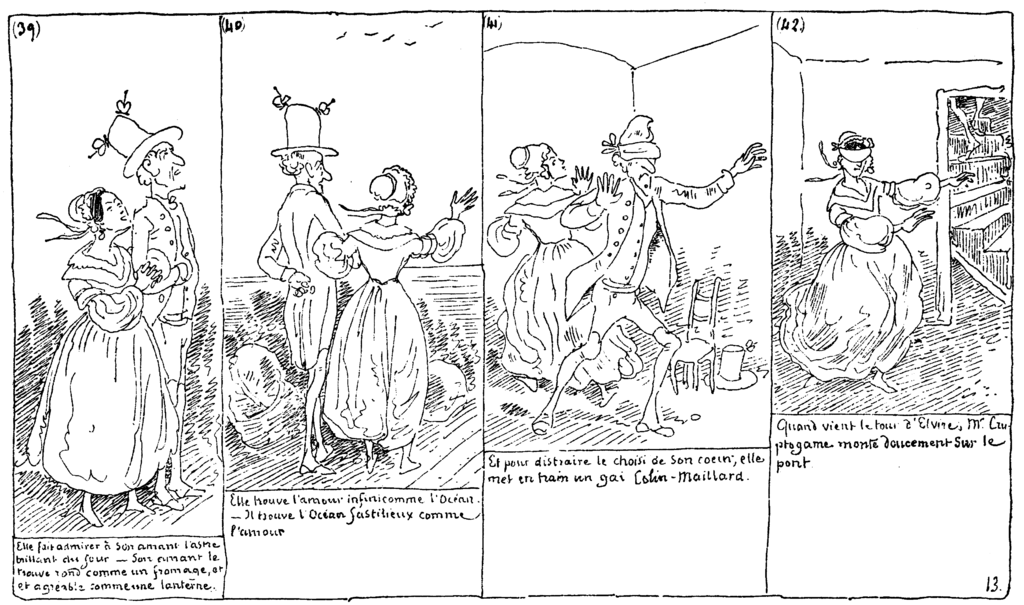
Human civilization has used illustrations, at least from early prehistory. On the other hand, Western comics can be claimed to have their roots in the early days of printing. In the early days of printed comic culture, text and illustration were combined. This earliest period, which began in the late fifteenth and early sixteenth centuries with the widespread usage of the printing press, can be referred to as the Pioneer Age.
Therefore, comics predate modern newspapers, even though, at one point, comic historians were adamant that the modern comic book could be traced back to the amusing cartoon strips published in daily newspapers. It was asserted that the first comic books were compilations of daily or weekly strips of sequentially arranged stories that were gathered and independently printed as magazines. Recent historians have presented compelling evidence to support the idea that comic books may be traced back to older sequences of images and text that existed far before the daily newspaper.
Germany and Italy both include early examples of text-illustration pairings. By the sixteenth century, satirical pamphlets and illustrated lithographs were being created throughout the English-speaking world. By the sixteenth century, satirical pamphlets and illustrated lithographs were being created throughout the English-speaking world. For instance, the graphic satire of William Hogarth (1697–1764) resembles what would later be referred to as comics. An early American example of a well-liked printed comic is Benjamin Franklin’s renowned “Join or Die” cartoon, which appeared in the Pennsylvania Gazette on May 9, 1754.
2. The Victorian Age (1828-1899)
During this time, American comic comics first appeared. Rodolphe Töpffer’s The Adventures of Obadiah Oldbuck was first published in Switzerland in September 1842 and is regarded as the first comic book. Then David Claypoole Johnston began releasing pictures for almanacs in 1828. Later, reprints of well-known comic strips gained enough popularity to justify publishing more of them with original storylines. The comic book was created. These proto-comics from the 1800s are still around today. The Victorian Age was eclectic since there were no established guidelines for their manufacture or even an actual system for gathering and selling comic art. The Victorian era was crucial in creating the start of the comic book industry’s massive market.
3. The Platinum Age (1897-1937)
Many people credit Richard Outcault with ushering in the Platinum Age of the comic industry. The ‘Yellow Kid’ newspaper strip by Outcault, which was originally published in March 1897 together in a facsimile reprint version in William Randolph Hearst’s New York Journal American periodical, might be the first American known ‘comic book’. Other newspaper comics were gathered into volumes and sold after Outcault’s Yellow Kid came next. Books entitled Mutt & Jeff and The Katzenjammer Kids were widely read at this time. Popeye and Little Orphan Annie were also alive at this time. This time is significant because comic books were expanding in popularity and usage. Comics has quickly become a pop culture because of the affordability of large-format magazines with tales that cost just 0.10 cents.
4. The Golden Age (1938-1955)
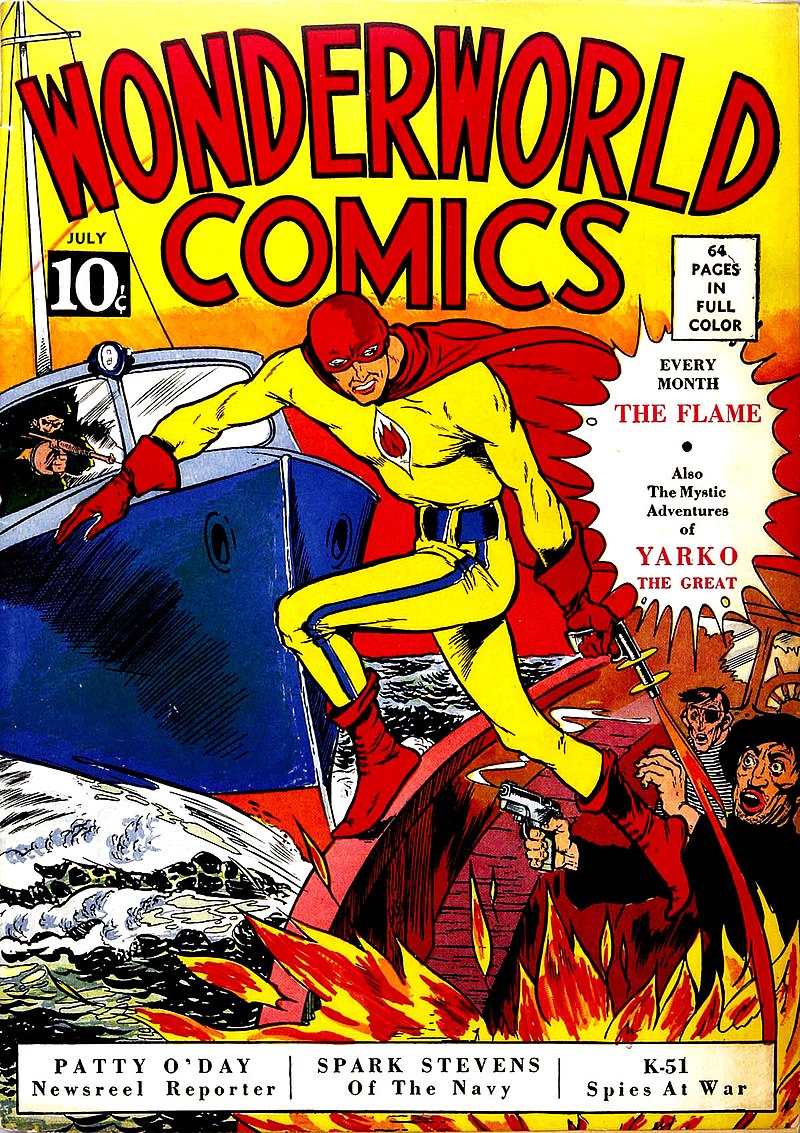
Many of popular culture’s most recognizable and enduring characters first appeared during the Golden Age of Comics. Superman immediately became a cultural phenomenon when he made his 1938 debut in Action Comics #1. Jerry Siegel and Joe Shuster conceived Superman. Several television programs, motion pictures, and video games have been produced as part of the media franchise that the character’s fame has produced. Another well-known figure from the Golden Age, Batman, made his first appearance in Detective Comics #27 in 1939. The essential components of the Batman mythos — the dark, brooding vigilante combating crime in Gotham City — have stayed constant despite the character’s many adaptations in different media.
William Moulton Marston and Harry G. Peter’s Wonder Woman made her comic book debut in 1941’s All-Star Comics #8. The figure, an Amazonian warrior with superpowers, has been portrayed in several media versions and has gained notoriety as a feminist symbol. These pioneering comic book characters had a significant influence on popular culture not only in the US but also abroad. The fact that these characters remain popular shows how powerful the medium produces iconic and timeless personalities.
5. The Atom Age ( 1946-1955)
The Atom Age is a branch of the Golden Age that overlaps with and directly leads to the Silver Age. On July 16, 1945, the first nuclear weapon exploded at the Trinity nuclear test site in Alamogordo, New Mexico, thus ushering in the ‘Atom Age .’Although 1945 falls firmly within the “Golden Age” of comics, the advent of comic books with nuclear explosions on their covers heralded the beginning of the Atom Age. Regarding categorization, ‘Atom Age’ comics are the outcome of the post-war decline of the superhero genre and the concurrent rise of romance, western, horror, sci-fi, war, and other types of comics.
Superheroes and mutations related to atomic energy would ultimately see a comeback, becoming a mainstay of the science-based fiction stories of the ensuing Silver Age. Ironically, the growing popularity of comics other than superhero publications was a significant element in turning the Atom Age into the Silver Age. The psychologist Dr. Fredric Wertham, researching adolescent delinquency, used his 1954 work Seduction of the Innocent to criticize the grim tales that appeared in comics in the late 1940s and early 1950s. The work of Wertham prompted a congressional investigation and attempts to outlaw comic books. But in the end, Wertham was able to persuade the remaining businesses to embrace the “Comic Code Authority,” which encouraged self-censorship and guaranteed that none of the tales or artwork in a particular comic would be excessively racy or edgy.
6. The Silver Age (1955 -1969)
Ironically, the new self-consciousness and increased output control that comic book publishers experienced during the Wertham trial were primarily responsible for the rise in professionalism. It eventually also resulted in the famous superhero figures returning to popular culture. The Atom Age’s terror and gloom gave way to more joyful tales by the late 1950s. So-called Silver Age comics underwent changes because of a new emphasis on heroism and the murky impact of science on American society. Many people refer to DC’s Showcase #4 as the first book of the Silver Age since it reintroduced the Golden Age speedster, The Flash.
Green Lantern was reintroduced and given a science fiction origin story in Showcase #22 following the resurrection of the Flash. His origin was now overtly scientific rather than mystical. The newly established “Marvel Comics Company” then prospered during this time, with their first issue, Fantastic Four #1, published in August 1961, emphasizing science fiction heroes as four astronauts develop various superpowers because of cosmic radiation. The Silver Age itself ended with the conclusion of the swinging sixties. Some people point to the increase in comic book prices from 0.12 to 0.15 cents as a sign that the silver era was ending.
7. The Bronze Age (1970-1983)
The Bronze Age began in the 1970s due to the growing emphasis on realism and intricate narratives that began at the tail end of the Silver Age. A more diverse and increasingly experimental approach to storytelling in the comic book medium also emerged because of the increased attention paid to comic book authors. Another effect of the end of the Silver Age was a growing emphasis on making comics socially relevant and more emotionally jarring, which went hand in hand with the weakening of the ‘Comic Code’ restrictions and censorship that had effectively sterilized stories throughout the 1950s and early 1960s.
To this purpose, the fantasy, horror, and romance genres all had a resurgence during the Bronze Age. Examples include Conan the Barbarian #1, published with a September 1970 cover date, and Marvel’s Tomb of Dracula, first published in March 1972 and regarded as a classic. All of these subgenres had fallen out of favor since the Golden Age. Books from the Bronze Age were fearless in taking chances. For instance, the Green Lantern series by Denny O’Neil and Neal Adams addressed racism, poverty, and drug usage. This new attitude of reality is brilliantly highlighted in Green Lantern #85, published in October 1971.
8. The Copper Age (1984-1991)
Some see the early Copper Age of comics as a continuation of the Bronze Age. In contrast, others believe that in the middle of the 1980s, the comic book business underwent considerable transformation, ushering in a new period. The ‘Copper Age’ officially began in the middle of the 1980s. This results from the widespread marketing developments in the sector after 1985. Marvel’s Secret Wars books and DC’s ambitious Crisis on Infinite Earths maxi-series both had an impact at this time. These initiatives experienced massive marketing campaigns that successfully altered how people read and collected comic books.
A new perspective started to drive sales and the pastime in new directions as an older generation of seasoned collectors saw the hobby as a chance to invest in priceless goods. Beginning in the early 1980s, comic book sales through small convenience stores and newsstands started to lose ground to the direct market. The publication of some sophisticated and mature works (The Dark Knight Returns by Frank Miller and The Watchmen by Alan Moore and Dave Gibbons from 1985–1966), which didn’t require the Comics Code Authority due to the direct market model, gave comics a more mature voice and greater complexity, moving even beyond the sophisticated story arcs of the Bronze Age.
9. The Modern Age (1992 to Present)
The start of the Modern Age was a time of extremes. Gimmicks like foil covers marked the early 1990s, the widespread appeal of anti-hero comics and outrageous art combined with brutal minimalist stories. Image Comics was founded in 1992 by Rob Liefield, best known for his work on X-Force, Todd MacFarlane, Jim Lee, and six other artists. The book that kicked off the celebration was X-Men #1 by Chris Claremont and Jim Lee, published in September 1991. It was released with numerous variant covers and sold at least 8,186,500 copies. According to the Guinness Book of World Records, this makes it the most popular comic ever.
The first appearance of Batman in Detective Comics #27, which sold for $55,000 at a Sotheby’s auction, was covered in a piece titled “Holy Record Breaker” in the New York Times on December 19, 1991. This record was immediately surpassed when Action Comics #1 sold for $82,500.00. These kinds of tales were what first drew in new collectors.
In January 1993, Superman v2 #75, written by Dan Jurgens and illustrated by Eric Kachelhofer, was published and quickly rose to fame. It was even featured in several evening news, and people waited in line to pick up their copies at one of the more than 10,000 comic book stores nationwide. Most people believed this comic would be worth thousands or millions of dollars in a few years or, at most, ten years. However, DC reinstated Superman in 1994, a year later. Millions of brand-new collectors suddenly faced the harsh reality of supply and demand. Nobody could sell their copy of Superman #75 for the cover price of $1.25, much less for a large sum.
As a result of fewer people having irrational expectations about how much a comic book with a considerable supply can be worth, the hobby is currently smaller, and sales are strong. Comic books’ influence on popular culture is now more significant than it has been since the Golden Age. Previously obscure comic book characters have become well-known. This is primarily a result of the rise of comic book-based films. Therefore, the era following 2000 could also be called the “Movie Age.” Who knows what the future may bring, but comic books have entered the mainstream thanks to films like The Avengers, which became one of the highest-grossing films this year. For better or worse, the future of comics today is related to their more significant pop culture presence.
Most Notable Comic Book Creators in History
With the efforts of writers and artists who pioneered and elevated the medium, the comic book business is what it is today. Some of the greatest stories in literature and art have come from comic books, attracting artists from all fields. Given that the medium is almost a century old, numerous painters, writers, and other creators have created a lot of groundwork over the years. The creations and ideas of those responsible for creating the current comics business are the source of many of the most well-known characters in literature.
1. Jack “The King” Kirby
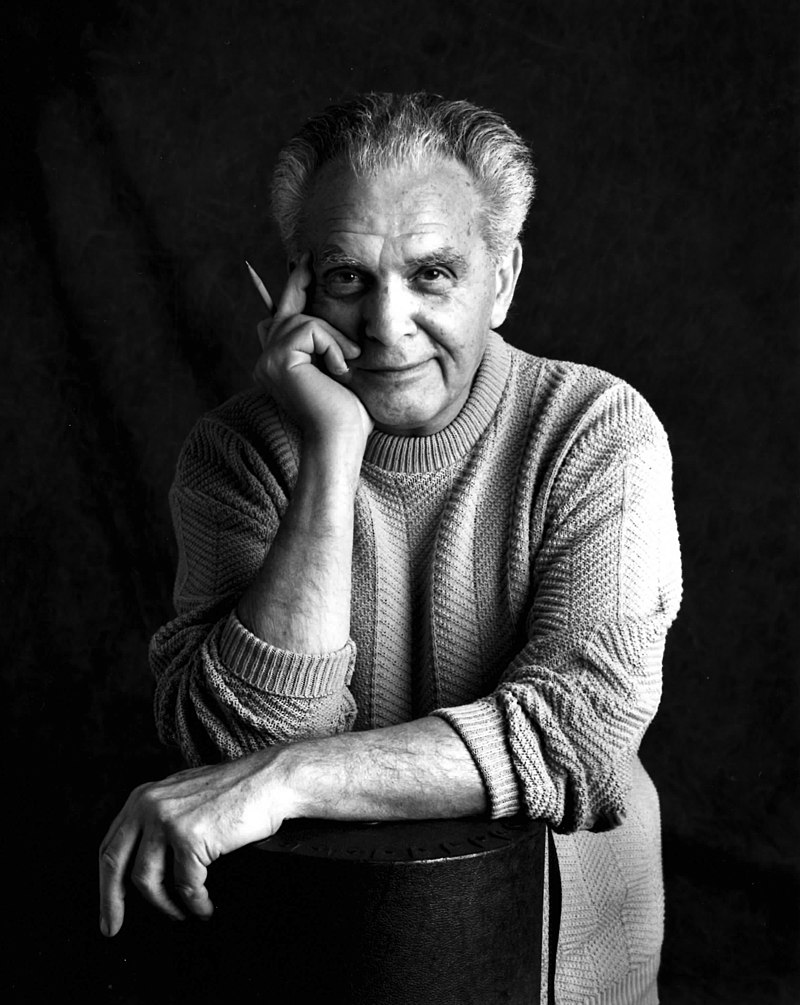
Jack “The King” Kirby was a significant comic book author and illustrator best known for developing or collaborating on some of the most well-known characters for Marvel and DC Comics. Kirby was born “Jacob Kurtzberg” on the Lower East Side of Manhattan in New York City in 1917. His artistic training was largely self-taught; he began by examining political and comic strip cartoonists’ newspaper illustrations. He listed comic strip artists Milton Caniff, Hal Foster, and Alex Raymond as forerunners of the adventure genre in comic strips as his principal influences.
Following the publication of a few pieces in publications for amateur artists, Kirby made his professional cartooning debut in 1936. The Lincoln Newspaper Syndicate recruited him to produce comedy strips and advice cartoons. The comic book industry was booming in the late 1930s and early 1940s, and there were plenty of openings for authors and illustrators who wanted to work in the field. Soon after, Kirby began working with co-founders Will Eisner and Jerry Iger at the Eisner and Iger Studio. The Studio was one of a handful of innovative businesses that sold finished comic book stories and artwork to the early publishing houses.
Kirby provided artwork to series in various genres, including humor, science fiction, swashbucklers, and Westerns, using a variety of pseudonyms. The simple fact that Jack Kirby’s work at both businesses is adored makes him an uncommon breed among comic book creators. Many creators may leave behind a legacy unique to one Studio or another. Still, Kirby did so with Marvel and DC’s most beloved heroes and villains. The Silver Age of Marvel and DC is when the legendary creator of characters like the Silver Surfer, Hulk, Black Panther, Darkseid, Thor, Fantastic Four, and many others produced his best work.
2. Stan Lee
Born Stanley Martin Lieber on December 28, 1922, Stan Lee was an American writer, editor, publisher, and producer of comic books. He worked his way up through a family-run company to become Marvel Comics’ chief creative director for 20 years, overseeing the company’s growth from a modest publishing house division to a multimedia conglomerate that ruled the comics market. He co-created several well-known fictional characters at Marvel, including the superheroes Spider-Man, the X-Men, Iron Man, Thor, the Hulk, the Fantastic Four, Black Panther, Daredevil, Doctor Strange, Scarlet Witch, and Ant-Man. Jack Kirby and Steve Ditko were his co-writers and artists.
Stan Lee, whose name is practically synonymous with the comic book medium, created many characters and was a successful businessman. Lee devoted much of his career to popularizing his tales and heroes and preserving the comic book community. Stan Lee put in a lot of effort both within and outside the Marvel bullpen, which helped the business grow into the billion-dollar brand it is today. In truth, Lee’s strenuous efforts benefited DC Comics as well. Marvel’s inventions drew in new generations of readers, with few sticking with Marvel exclusively.
3. Gardner Fox
Since working for DC, Gardner Fox has frequently been a dreadfully undervalued creator. While Stan Lee and Jack Kirby are frequently cited as the founding creators of comic books, Fox also enjoyed a glorious period and left a legacy. The Justice League and the Justice Society of America, two of DC’s top superhero teams, were both established by Fox in addition to some of the comic book publisher’s greatest heroes, such as Barry Allen’s Flash. His most well-known work is the “Flash of Two Worlds” story, in which Barry Allen and Jay Garrick teamed up to launch the DC multiverse.
4. Frank Frazetta
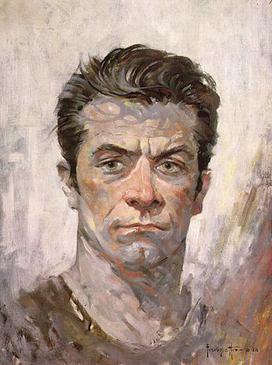
Frank Frazetta is one of the most famous and prolific illustrators of the 20th century. This is a result of his work appearing in a multitude of mediums, as well as his instantly recognizable style. Frazetta was a tremendously gifted artist who claimed to have started creating art at three and sold his first piece of work at the age of eight. At the Brooklyn Academy of Fine Arts, he acquired formal training in the arts. When he was 16, he began working on “Shining Knight” comics, his first foray into comic book illustration. Although he did subsequent work for Timely (Marvel), Standard, and Toby, his early work was for DC.
Even though Frank Frazetta is more renowned for his paintings, he is a virtuoso regarding illustrations in black and white. Frazetta’s comics have left a lasting impression, even if it was just for a short while. Frank Frazetta produced works in various genres during the 1940s and 1950s, including epic science fiction and westerns. He even assisted Will Elder and Harvey Kurtzman on their Little Annie Fannie Playboy comics. His artwork has continued to carry on his heritage.
5. Steve Ditko

One of the most unique, weird comic book creators is Steve Ditko. Despite the apparent simplicity of his work, a close examination reveals that his style contained distinct emotional beats. The work of Steve Ditko, who co-created Spider-Man with Stan Lee, is the most renowned example of this. Ditko would alter panels and character expressions to convey genuine emotion, giving Spider-Man a leaner appearance than other era superheroes. Ditko created stories for additional Marvel characters from the era and, Spider-Man and Dr. Strange. He illustrated tales about Bruce Banner’s Hulk and Tony Stark’s Iron Man. In 1964, Ditko is credited with creating the Leader/Samuel Sterns, who has since been the Hulk’s primary foe.
The Comic Books Collectibles of All Time
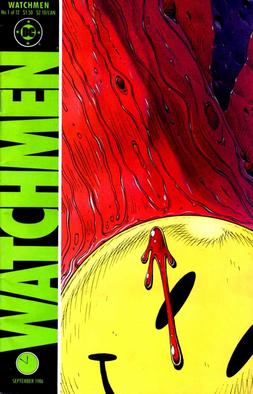
Comics have been a global favorite for almost a century. Many comic books, graphic novels, and manga characters have become well-known, and their film adaptations bring in billions of dollars. It’s challenging to narrow down the most excellent comic books ever because Marvel, DC Comics, Image, Dark Horse, and many more publishers release instant classics every decade. However, a select group of well-known graphic novels and comic books stand out above the others. Since the medium’s inception in the 20th century, its growth has been exponential. With each decade that passed, more and better comic stories were published, gradually altering how comics and their characters are written.
1. Watchmen by Alan Moore and Dave Gibbons
Before Watchmen, camp dominated the comic book industry. The colors were too solid and plain. The conversation lacked realism. The lines between good and evil were drawn. Watchmen, a book written exclusively for adults, revolutionized everything because it was incredibly political and filled with criticism of the comic book business. Moore and Gibbons created a landmark in comic book history using parodies of the original Charlton Comics characters. Moore’s Watchmen series is his most well-known comic industry work. The book, created by artists Dave Gibbons and John Higgins, served as a dark parody of the superhero genre by presenting a collection of ethically dubious “heroes” who are obviously — and dangerously — unbalanced in their ways.
2. Chris Claremont and Jim Lee’s “X-MEN” #1
The market freaked out with this new X-Men series created by Lee, an up-and-coming artist at the time, and Claremont, the most adored X-writer of all time. The first issue included five separate covers, which were released in installments over a five-week period. Four covers combined to create one large image, and the fifth featured a gatefold cover that unfolded into the same picture without any advertisements. A single man purchased 2,400 copies. Marvel: X-Men #1 reportedly sold 8,186,500 copies, a figure so high that not even the Golden Age can rival. This proves that it was successful.
3. Action Comics No.1
The 1938 issue of “Action Comics” No. 1, which featured Superman for the first time and gave rise to modern-day comic book superheroes, is considered the pinnacle of comic books. A book with a 9.0 grade went for $3,207,852 in 2014; a portion of the money went to the Christopher and Dana Reeve Foundation. A 9.0 copy of “Action Comics” No. 1 that belonged to actor Nicolas Cage sold for $2.161 million in 2011 before that sale. In 2018, an 8.5-graded edition of the famous comic book sold for $2,052,000 at Comic Connect, making it the second most expensive transaction ever. The comic book set a new record in 2021 when it was sold once more for $3.25 million.
4. The Dark Knight Returns, Batman
Miller’s The Dark Knight Returns is arguably the most well-known tale of an alternate universe Batman. Although considered a timeless classic by the majority, some of its concepts have regrettably been misinterpreted and subsequently exalted in the present era. Despite this, it is nevertheless a compelling action and politically dystopian-set Batman arc that shows the hero in a more cynical and jaded light following the deaths of most of its other heroes. After Gotham descends into senseless crime and the US government consistently disregards the dying city, Bruce Wayne, over 50, is forced to don the cape and cowl again. The once-great Superman has been successfully reduced to the status of a political pawn and lapdog by the same ruling group.
5. “The Sandman”
The Sandman, written by the brilliant Neil Gaiman and illustrated by various artists, is the most recognizable Vertigo series that DC released. Dream, one of the seven Endless, is the novel’s main character. He is captured by cult members and is forced to admit that even beings more powerful than DC’s gods, like them, must accept unavoidable change. Gaiman’s masterpiece, The Sandman, is revered for its ethereal and bizarre personifications of philosophical ideas. The Endless personifications represent some of the most potent cosmic powers.
CONCLUSION
For many years, comic books have been a mainstay of popular culture, influencing everything from music and fashion to television and film. Comic books are, at their core, sequential art stories that combine text and images to tell a story. They may be available in print issues or as digital downloads, among other formats. These early comics established the superhero genre, a mainstay of the industry even today. The comic book market is lively and diverse, offering readers various genres and forms.
Today, many enthusiasts still enjoy the pastime of collecting comic books. Online marketplaces have made it simpler to buy and sell comic books, and the growth of the internet has given collectors access to a greater variety of comic books than before. A new generation of comic book lovers and collectors has also emerged because of the success of comic book adaptations in films and television.
The history of collecting comic books is lengthy and dates back almost a century. Comic books have seen many changes over the years, from their humble beginnings as disposable entertainment to their current standing as a priceless collectable. Today, collecting comic books is still a popular past time for people all over the world.

